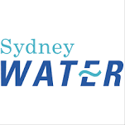
BIA summary and BCP in a single click
API engine to connect with other internal systems
Management insights in configurable dashboards
Sydney Water focusses on being socially responsible and to sustain a positive return for their shareholders and the community. To keep up with their ambitious goals as an organisation, a lot that goes on behind the scenes. Business resilience with effective continuity plans are central to their ongoing success.
Rebecca Gonzalez is the Resilience Program's Leader at Sydney Water. Rebecca works in the operations business unit together with environment and resilience teams making sure that Sydney Water’s assets, services and products are robust against disruption.
“The region takes in an estimated 50,000 kilometres of pipe, 1,000 pumping stations, 300 reservoirs, five treatment plants, and we have 27 wastewater treatment plants. There are a lot of assets, probably $4.5B worth of assets to protect and we operate with a company of around 2,700 staff, including contractors. We have a lot of maintenance vendors and a lot of property maintenance windows as well.
- Rebecca Gonzalez, Resilience Program’s Leader, Sydney Water
Sydney Water’s challenges to complete accurate BIAs
Every two years Rebecca and her team would conduct business impact assessments to ensure their monitoring and resilience programs were sufficient, should a disruption occur. This was not ideal for their business due to the organization being so dynamic with changes happening all the time. Annually would be a more ideal solution, because when something did go wrong, they started to plan. But of course they didn't want to be planning when they're actually meant to be responding to an incident. It was often too late. Due to the process taking so much time to collate and verify the information, and then report on their findings, attempting to accomplish this once every year was not at all feasible.
“We look at critical infrastructure as a means. We're looking at early warning systems. We look at assets that are leaking and breaking and try to find out why. We also look at investigating failures. On the environment side, we look at planning approvals to make sure we're not damaging the environment, urgently reacting to incidents when we do.”
- Rebecca Gonzalez, Resilience Program’s Leader, Sydney Water
Traditional solutions VS Automated SaaS
Proactive rather than reactive - Single source of truth and streamlined processes
“In some situations I may need to test more frequently due to higher risks. We can evaluate the entire process through the tool which also allows us to capture and record the testing information. That gives our executives confidence that the plans work because they've been tested and everything makes sense. I think they are going to be really excited to see the status of their business in an instant and where their disruption risks are.”
- Rebecca Gonzalez, Resilience Program’s Leader, Sydney Water
The power of ReadiNow and leveraging APIs
Sydney Water also experienced the extended capabilities of ReadiNow and how it is able to connect with other apps. The API engine within ReadiNow and the ability to integrate with other tools significantly assists their data analytics and incident recording.
“Using APIs we can get weather warnings from the Bureau of Meteorology and can see what the weather looked like. How many millimetres of rain we had, how we reacted to the incident and what the outcome was. It will be really helpful for debriefing after incidents and to be able to reflect on that level of data.
I could even set controls for specific weather circumstances to pre-empt responses. This would help justify expenditure and investment in infrastructure as well.”
- Rebecca Gonzalez, Resilience Program’s Leader, Sydney Water
SaaS that grows with your business processes
A key feature ReadiNow offers Sydney Water, is the ability for the platform to grow with them as the business matures, or as their processes change. They can easily introduce other critical impacts that the business also relies on understanding. Criticality around customers, defining which customers are critical. How they would suffer if they lose water and whether that’s by financial or reputational damage. For their assets, they can determine which assets are critical to delivering their water and wastewater services, and these can be changed as their needs grow.
Empowering Subject matter experts: No-code, zero-code – drag and drop for yourself
The flexibility of the functionality and the freedom ReadiNow gives clients to create fields without having to get a programmer to code for them. It empowers subject matter experts and process owners to develop their ideal tools. The drag and drop features inherent with ReadiNow make modifying or creating your configuration really simple.
“That's the beauty of zero code. I don't need to go and create a workflow through coding. I can simply drag and drop the different modules onto my template. Giving that control back to subject matter experts or process owners is really exciting – because the person who knows the process best is creating it. I'm not at the mercy of digital experts to be able to make changes for us.” Commented Rebecca. “If I have a great idea, I can just implement it straight away! We really like the mobility of the tool as well - I can use the laptop or desktop or even bring data up on my mobile phone in the middle of a disruption. I also like the fact that it flows through to business continuity plans as well, which flows through to testing. I can have my whole process in the one tool. I really like that.”
- Rebecca Gonzalez, Resilience Program’s Leader, Sydney Water
Sydney water looked at several other products in their due diligence before onboarding ReadiNow. But found in comparison that they were quite limited in their ability to adapt to business and process changes. As well as very expensive to change or reconfigure.
Whole GRC Solutions igniting interconnected abilities
“We found that it was better than practically every government department in New South Wales that we’ve assessed. The controls are fabulous. That gave us a lot of confidence that our information will be protected. We also know that we have disaster recovery in place with ReadiNow,” exclaimed Rebecca. “So if we lose a server, we know that we will flick over to a backup, and we won't actually lose any connectivity. We'll be able to access the data we have. I love the support that you can get from that.”
- Rebecca Gonzalez, Resilience Program’s Leader, Sydney Water
Easy implementation VS complex implementation VS ReadiNow
ReadiNow is an Australian business with a strong local presence in Sydney and no offshore outsourcing.
“I found ReadiNow to be really easy to deal with. The team is friendly, they’re open and nothing was a no. No matter what curveball we threw at them, the response was always similar to ‘I'll see how I can best make that happen for you,’ which was fantastic. “Before selecting ReadiNow I also had a look at the implementation at other organizations. I saw complex, I saw really simple, and when I saw ReadiNow, I thought, that's for me! I can make it as simple or as complex as I need. It’s up to me. And I highly recommend that to people. You can grow your processes as your business grows and as the staff’s maturity grows, and that agility is very attractive!”
- Rebecca Gonzalez, Resilience Program’s Leader, Sydney Water
Rebecca explained how the reports and testing are arguably her favourite features. Along with the customisable dashboards and no code. “In the end, I love being able to create my own fields. I do my own config and I try to tell everyone else – if you’re going with the cloud, go with ReadiNow because you get the control back into your own hands. And when you’re accountable, who best to understand your process than the process owner?”

Suite 202, Level 2
55 Clarence Street
Sydney NSW 2000
Call Us: 1800 153 153
Email Us: sales@readinow.com
![]()
No Comments Yet
Let us know what you think